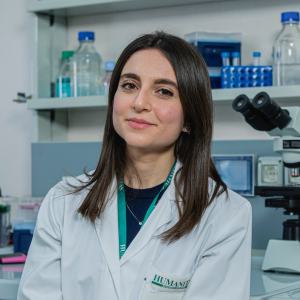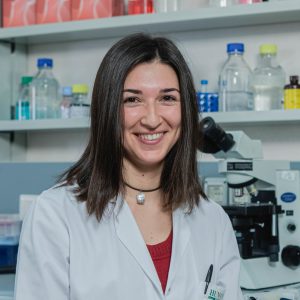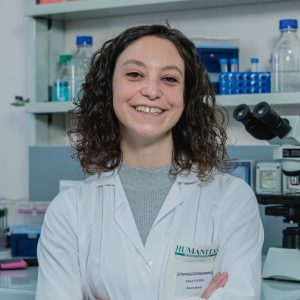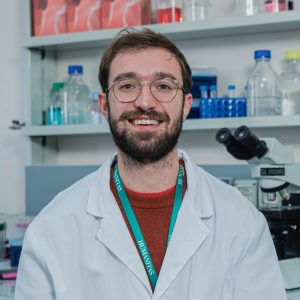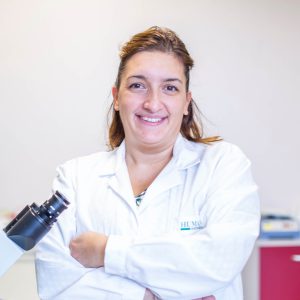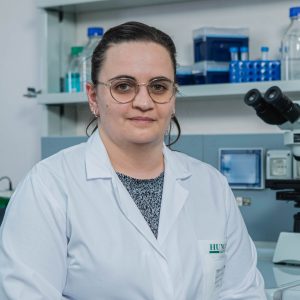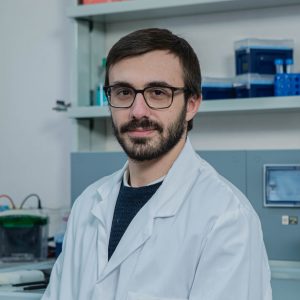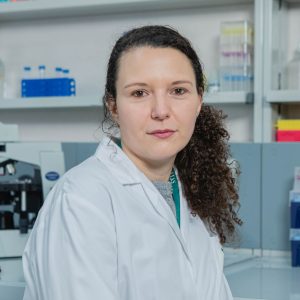Research Group
Lodato Group
Developmental Neurobiology Lab
Our lab aims at decoding the crosstalk between genetic and environmental factors governing the development of microcircuits in the cerebral cortex. These circuits have a fundamental role in the execution of complex behaviors and their dysfunction is involved in many neurodevelopmental and neuropsychiatric disorders
The challenge
Complex brain functions, such as movement control, emotion processing and cognition are executed by highly sophisticated neural networks in the cerebral cortex, composed by an array of distinct excitatory and inhibitory neuron subtypes. Alterations in the excitatory/inhibitory balance during cortical development are often associated with neuropsychiatric and neurodevelopmental disorders, like schizophrenia, epilepsy, and autism spectrum disorders. In our lab, we want to understand how different subtypes of neurons acquire their identity and assemble into balanced and functional microcircuits, with the final aim of unveiling new biomarkers and therapeutic strategies.
Main research areas
Genetic programs controlling neuronal diversity and disease susceptibility
We discovered heritability enrichment in risk genes for Schizophrenia, Autism Spectrum Disorder, and Bipolar Disorder in distinct subtypes of projection neurons and we are currently dissecting the functional role of these genes in specific neuronal subtypes in vivo and in 3D organoids (cerebral cortex, spinal cord, choroid plexus). Since electrical activity is also known to influence circuit wiring, we are studying spontaneous activity’s role in cortical development, which is largely overlooked. Supported by an ERC Starting Grant, we want to understand how spontaneous patterns arise and how they affect brain development and disease susceptibility.
Neuronal Activity in early cortical development
We are interested in understanding the role of neuronal activity in the development of the prenatal brain and investigating the intricate interplay between early spontaneous activity and molecular programs that control circuit assembly. By using cutting-edge single-cell approaches, we aim to unravel the contributions of ion-conducting proteins to brain wiring. Combining genetic studies and in-utero animal modeling, our research focuses on the precise control of ionic flux and its impact on crucial prenatal developmental processes such as neural proliferation, migration, and differentiation of different neuronal subtypes, eventually wired in functional circuits. Our research seeks to understand how alterations in the activity of ion-conducting proteins or alteration of the surrounding environment during prenatal brain development can lead to the manifestation of early-life epileptic disorders and intellectual disabilities. By deciphering the mechanisms underlying these processes, we strive to identify novel targets for therapeutic intervention and develop innovative treatment strategies for these devastating disorders.
Human brain organoids 2.0
By integrating molecular, genetic, and functional analysis – at single-cell resolution- we are studying the cellular substrate and the molecular patterns of selective vulnerability in neurodevelopmental (infantile epilepsy and autism) and neuropsychiatric disorders leveraging patients’ iPCS-derived brain organoids. focuses on utilizing human brain organoids as powerful tools for studying neurodevelopmental disorders, particularly epilepsy. By employing this innovative model, we aim to gain insights into the underlying mechanisms and pathophysiology of these disorders during early brain development. Human brain organoids offer a unique opportunity to recreate the complexity of the human brain in a lab setting, allowing us to investigate cellular interactions, neuronal activity, and network dynamics associated with neurodevelopmental disorders and epilepsy. By collaborating closely with clinical partners, we aspire to translate our findings into tangible improvements in the care and management of individuals affected by early-life epileptic disorders and intellectual disabilities. We are also leverage the power of 3D bioprinting strategies to pioneer novel organoids with a more complex neuronal architecture, complemented with non-neural components to engineer precise microenvironments and better reproduce the cellular and functional features of the developing human brain and study disease mechanisms.
Selected publications
Decoding neuronal diversity in the developing cerebral cortex: from single cells to functional networks.
Cerebral cortex assembly: generating and reprogramming projection neuron diversity.
Generating neuronal diversity in the mammalian cerebral cortex.
Gene co-regulation by Fezf2 selects neurotransmitter identity and connectivity of corticospinal neurons.
Multiple knockout mouse models reveal lincRNAs are required for life and brain development.
A sip of GABA for the cerebral cortex.
Loss of COUP-TFI alters the balance between caudal ganglionic eminence- and medial ganglionic eminence-derived cortical interneurons and results in resistance to epilepsy.
Excitatory projection neuron subtypes control the distribution of local inhibitory interneurons in the cerebral cortex.
Efficient construction of sequence-specific TAL effectors for modulating mammalian transcription.
Area-specific temporal control of corticospinal motor neuron differentiation by COUP-TFI.
Development and regeneration of projection neuron subtypes of the cerebral cortex.
Group members
